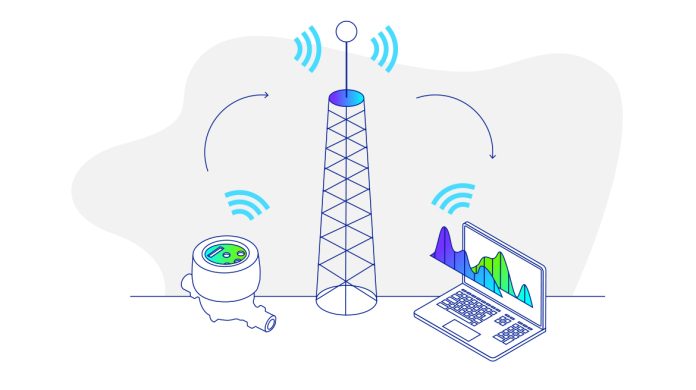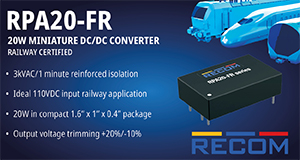As India accelerates its journey toward a digitally empowered, sustainable energy future, Advanced Metering Infrastructure (AMI) has emerged as a linchpin for modernizing the nation’s power grid. With rising energy demands, expanding renewable integration, and bold policy initiatives like the Revamped Distribution Sector Scheme (RDSS), the role of smart metering has never been more critical.

In this exclusive interview with ELE Times, Ashish Sahay, Country Manager and Sales Director at Wirepas, shares insights into the transformative role of AMI and RF mesh technology in India’s smart grid evolution. With Wirepas leading the charge in next-gen, infrastructure-free connectivity, Sahay outlines how the company is enabling scalable, cost-effective solutions tailored to India’s unique power distribution landscape.
Excerpt:
ELE Times: India is undergoing a massive transformation in its power sector. How do you see Advanced Metering Infrastructure (AMI) playing a critical role in this journey toward a smarter, more resilient grid?
India’s energy landscape is evolving rapidly, and Advanced Metering Infrastructure (AMI) is emerging as a foundational pillar in building a smarter, more resilient power grid. With rising energy demand and a growing share of renewables, utilities need real-time visibility and control to ensure grid stability. Smart meters provide exactly that – enabling accurate consumption data, reducing non-commercial losses, and helping utilities become financially viable. The loss-making governmental electricity distribution companies, which already have implemented smart meters, have become profitable. This, in turn, allows them to reinvest in modernizing the grid. For consumers, AMI brings transparency, accurate billing, and better control over energy usage. It’s a critical enabler in India’s journey toward sustainable and equitable energy access.
ELE Times: Wirepas has introduced a unique 5G RF Mesh technology to the Indian market. Can you explain how this solution differs from traditional communication networks and how it improves scalability, cost-efficiency, and performance for smart metering?
Ashish Sahay: Wirepas’ RF mesh technology is fundamentally different from traditional communication networks used in smart metering. Instead of relying on costly and complex infrastructure like cellular base stations, Wirepas turns each smart meter into part of a decentralized, self-healing mesh network. This means meters connect directly with their neighbors, forming a resilient and scalable system with no single point of failure.
The real game-changer is cost and scalability. We have removed the need for network infrastructure. RF Mesh requires a point collecting data to be sent to the cloud. Wirepas has enabled in-meter gateway where, one smart meter having a cellular connection can support up to 300 Wirepas RF mesh meters, dramatically reducing communication costs. With built-in wireless modules running Wirepas software, utilities can deploy at scale without compromising on performance – achieving proven 99.9% reliability even in challenging environments. It’s a flexible, high-performance solution designed from the ground up to meet the unique demands of India’s smart metering rollout.
Current regulatory setup in India, has not yet adapted to the European harmonized standard for 5G mesh. India has 1880-1900 MHz spectrum available, but not yet allocated for NR+ 5G standard, like in Europe. For this reason Wirepas has adapted 5G technology to be used on 865-868 MHz spectrum with less performance. Going further, the Indian government should enable NR+ 5G technology to be used on the 1880-1900 MHz band which is currently allocated to legacy DECT devices.
ELE Times: Despite government mandates, large-scale smart grid adoption still faces hurdles. From your experience, what are the key challenges utilities face when implementing AMI solutions, and how can they be addressed?
Ashish Sahay: Despite strong government support, large-scale smart grid adoption in India still faces several key hurdles. One major challenge is the industry’s limited experience with smart metering – especially early on, when the local ecosystem was still developing under the Make in India initiative. Many utilities and contractors are still climbing the learning curve, which has led to delays and uneven rollouts.
Reliable communication is another critical issue. AMI depends on consistent, high-quality connectivity, yet cellular coverage in India can be patchy – especially in rural or densely built-up areas. In some cases, only 70% of cellular smart meters maintain a connection, and even when coverage exists, the quality may fall short of AMI service requirements. Workarounds like BLE-based smartphone reconnections are not scalable solutions. While lower cost RF Mesh can deliver better coverage and SLA. Typically each smart meter using Wirepas Mesh communication technology is able to communicate via 50 or more meters, providing seamless network coverage and strong network signal.
Additionally, utilities must navigate the massive scale of deployment and the hidden costs tied to cellular technologies, such as SEP (Standard Essential Patent) fees and long-term subscription costs, which can significantly impact margins.
To overcome these challenges, solutions like Wirepas Mesh offer a compelling alternative. By turning each smart meter into a node in a self-healing, decentralized mesh network, Wirepas eliminates dependency on cellular coverage. It also reduces cost and risk by avoiding SEP-related liabilities. This approach not only ensures reliable connectivity across urban and rural environments but also supports fast, large-scale rollouts, making it a strong fit for India’s ambitious AMI goals.
ELE Times: India’s power sector is guided by ambitious digitalization goals under initiatives like RDSS. How aligned is Wirepas with these national programs, and what role does policy play in accelerating smart metering deployment?
Ashish Sahay: Wirepas is fully aligned with India’s digitalization goals under initiatives like the Revamped Distribution Sector Scheme (RDSS). These policy-driven programs have been instrumental in accelerating smart metering adoption by providing clear targets, financial support, and standardized requirements that create a level playing field for all stakeholders. Without such initiatives, large-scale rollouts would be fragmented and far slower. For Wirepas, this policy alignment means we can offer scalable, infrastructure-free connectivity that meets national standards, helping utilities deploy faster, more efficiently, and at lower cost. Policy has truly been the catalyst turning smart metering from a tech upgrade into a national imperative.
India government RDSS is becoming a worldwide role model of well executed national smart metering programs. Defining the standard at the right level enables the free competition and helps utilities to reach their roll-out targets in time.
ELE Times: You’ve worked across global markets—what lessons from international smart grid rollouts are particularly relevant to India’s unique power distribution landscape
Ashish Sahay: The lifetime of AMI systems is increasingly reaching 15 years or more. This places significant demands on the selected technologies to ensure they do not become obsolete during their operational lifespan.
India tends to focus on short-term goals, such as the upfront cost of hardware, while in reality, maintenance costs (OPEX) play a major role in the overall business case. For instance, parts of Southern Europe widely adopted PLC technology, which, despite the low cost of smart meters, led to high system maintenance costs.
In Europe, in-meter RF mesh gateways have proven to be by far the most economical solution for deploying RF connectivity, effectively covering both rural and densely populated urban areas. India has the opportunity to replicate this success.
ELE Times: With rapid innovation in IoT and connectivity, where do you see the future of connected utilities heading in India over the next five years—and how is Wirepas positioning itself to lead that future?
Ashish Sahay: Over the next five years, India’s connected utilities will evolve into highly data-driven, responsive systems, powered by real-time insights and seamless IoT connectivity. At Wirepas, we see this transformation as a huge opportunity, and we’re positioning ourselves to lead it. Today, our RF mesh technology is already used in around 25% of new smart meter deployments in India, and we’re committed to expanding that footprint by partnering with local players and licensing our technology to Indian manufacturers.
Our solution is built for scale, performance, and future demands, supporting granular data collection intervals and ultra-resilient communication, all with the lowest total cost of ownership. We’re not just keeping pace with innovation; we’re setting the standard for what AMI connectivity should look like in India’s next phase of digital utility transformation.
Wirepas based systems enable utilities to also benefit from load balancing use cases to utilize the same RF communication with the electricity loads connected to the grid.








